Top 10 Ruins in Peru to Visit in 2024/5

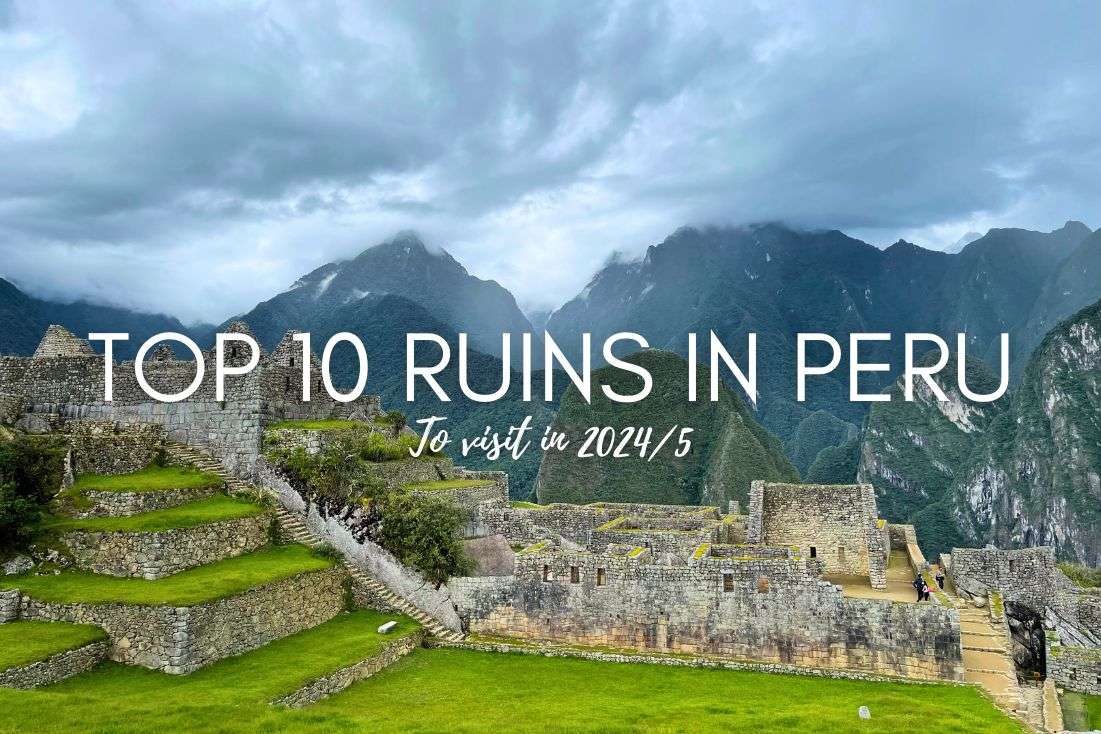
When you think of Peru, chances are you picture towering mountains, alpacas, vibrant locals in colorful clothing, and, of course, Peru’s ancient ruins. While many of these ruins are remnants of the Inca Empire, Peru is also home to much older archaeological sites where you can discover how pre-Inca cultures once thrived (and how they fell).
No trip to Peru is complete without exploring these glimpses into ancient history. Luckily, you won’t have to go far to stumble upon an Inca site—or ten! In Sacred Valley, it’s easy to visit multiple ruins in a single day.
And surely you weren’t planning on visiting Peru without seeing the Machu Picchu ruins, right? But beyond this world wonder, some of the most mysterious places, like the ancient city of Vilcabamba, are still hidden deep in the jungle, requiring visitors to trek for days to reach them.
Even Cusco itself holds plenty of Inca ruins—from the towering fortress of Sacsayhuamán to the spiritual heart of the empire, Qorikancha. But don’t miss Northern Peru, where you’ll step even further back in time. The ancient cities of Chan Chan and Pachacamac were built long before the Incas ever dreamed of ruling the land.
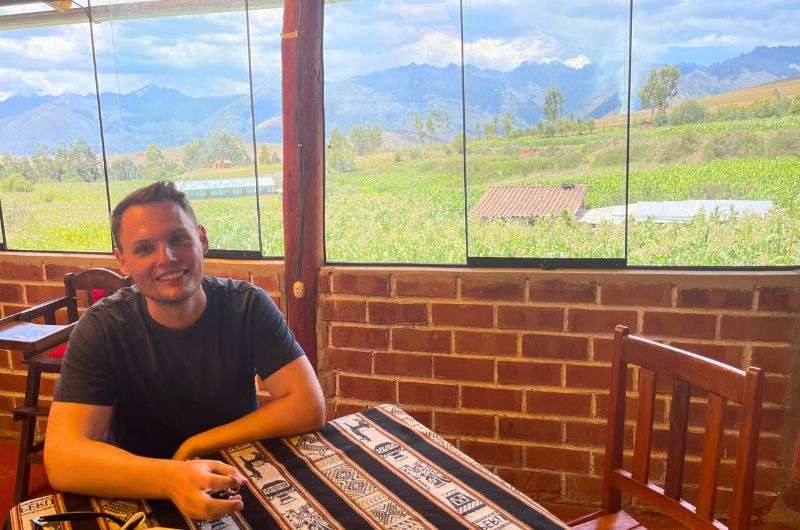
These are the 10 best ruins in Peru I’ve visited. Prepare to be amazed!
Let’s jump right in to my top 10 list of best ruins to visit in Peru!
A quick list of the top ancient ruins in Peru:
- Machu Picchu (Cusco region, closest city: Aguas Calientes)
- Pisac (Sacred Valley, closest city: Cusco)
- Moray (Sacred Valley, closest city: Cusco)
- Chan Chan (La Libertad region, closest city: Trujillo)
- Pachacamac (Lima region, closest city: Lima)
- Ollantaytambo (Sacred Valley, closest city: Cusco)
- Chinchero (Sacred Valley, closest city: Cusco)
- Sacsayhuaman (Cusco region, closest city: Cusco)
- Vilcabamba (Cusco region, closest city: Cusco)
- Qorikancha (Cusco region, closest city: Cusco)
Sometimes, all you need to do is take the first step... I've filtered out the best hotels in Peru for you
Save it for yourself to come back to later, or share with your friends on social media!
I've already planned your ititnerary for the trip, complete with my travel tips.
Ruins in Peru: Map
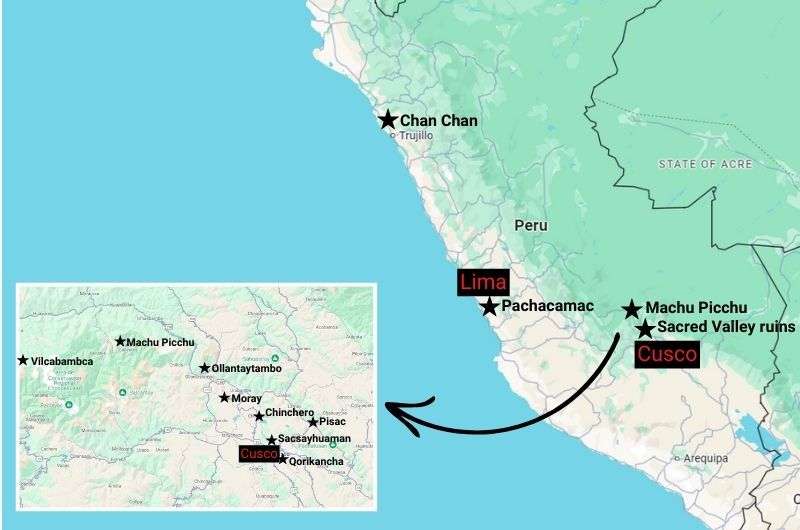
Most of the my favorite ruins in Peru are located in the Sacred Valley near Cusco
My top tips for visiting the ancient ruins in Peru:
- Tickets are simple: The Inca sites in Cusco and the Sacred Valley (Sacsayhuaman, Qorickancha, Moray, Pisac, and Ollantaytambo) can all be visited on the Cusco Tourist Ticket. My Sacred Valley Guide has all the details about securing a ticket.
- Don’t forget the SPF: The sun in the Andes is no joke, even on cloudy days! At these high altitudes, UV rays are much stronger, so make sure to slather on plenty of SPF. Trust me, a sunburn can sneak up on you fast up there.
- Consider renting a car for flexibility: Renting a car can give you the freedom to explore the Sacred Valley at your own pace. While public transport and tours are easy to find, having a car lets you visit lesser-known ruins, stop for spontaneous views, and avoid crowded tourist buses. Just be prepared for some winding mountain roads! Read about driving in Peru.
- Is Machu Picchu worth it? I’m not easily impressed and I was worried Machu Picchu wouldn’t live up to the hype, but it totally did! Don’t hesitate a second, Machu Picchu is worth the convoluted logistics to get there.
- Acclimatize before trekking: If you’re planning on hiking to any of these sites, especially in the higher-altitude areas like Ollantaytambo or Sacsayhuaman, give yourself at least a couple of days to acclimatize in Cusco. Altitude sickness can sneak up on you, and trust me, it’s no fun. I recommend Hilton Garden Inn.
And now, here are the ruins in Peru that I think are worth your time:
1. Machu Picchu (Cusco region, closest city: Aguas Calientes)
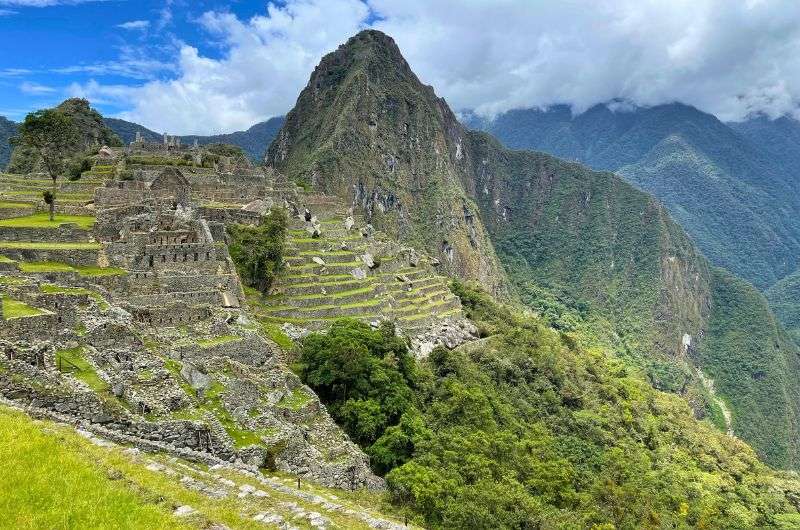
Machu Picchu
- Origin: Inca
- What it is: An iconic Inca citadel perched high in the Andes, known for its sophisticated dry-stone construction and breathtaking views.
- Fun fact: Although often called the "Lost City of the Incas," Machu Picchu isn't the true lost city—Vilcabamba holds that title!
The Inca city of Machu Picchu doesn’t need much introduction, you’ve all seen the photos. Machu Picchu are the Inca ruins of a massive city that was built atop a mountain with phenomenal views. And it’s not easy to get to, either, adding suspense, adventure, and a whole lot of spending on transportation to actually be able to witness Machu Picchu with your own eyes.
Machu Picchu was never really lost, the locals always knew it was there. So, when Yale University history professor Hiram Bingham III discovered it in 1911, he actually just found it. Or more precisely, a local showed it to him.
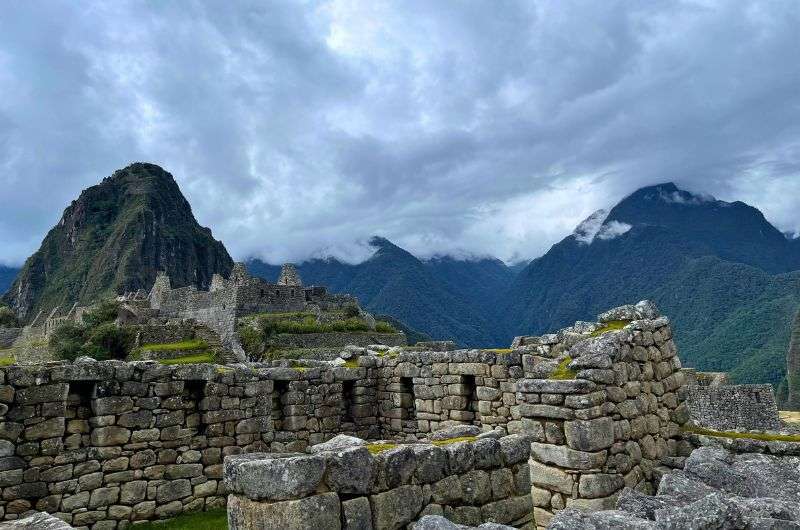
The Lost City of Machu Picchu
Where are the ruins of Machu Picchu, the Inca Empire’s most famous city?
The impressive ruins of Machu Picchu are located in the Andes Mountains of southern Peru, one of the most iconic locations in the country, perched on a ridge 2,430 m (7,970 ft) above sea level, near the town of Aguas Calientes and about 80 km (50 mi) northwest of Cusco.
How to get to Machu Picchu?
To get to Machu Picchu, you’ll be driving for about an hour from Cusco to Ollantaytambo (or taking another, slower mode of transportation, like a train), getting on a 1.5-hour train ride along the Urubamba River from Ollantaytambo to Aguas Calientes, and then a 20-minute bus from Aguas Calientes to Machu Picchu Inca city.
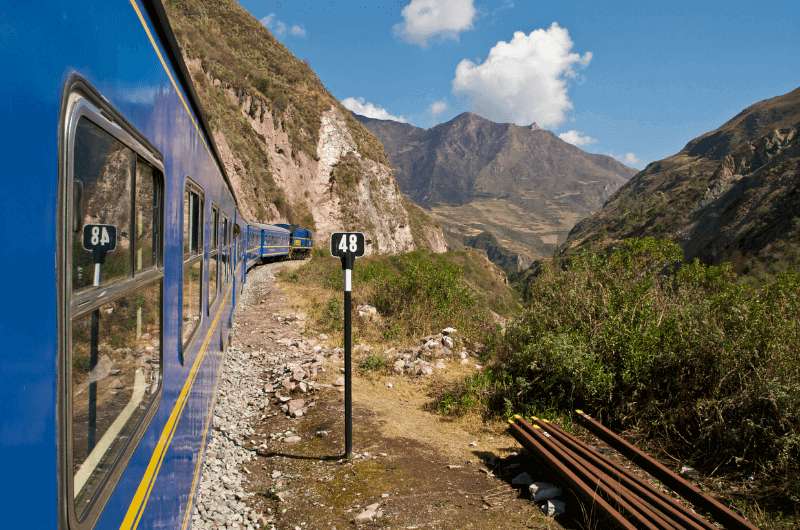
Take a train to get to Machu Picchu, it’s the best option
Machu Picchu tickets
You’ll also need to purchase your tickets to Machu Picchu up to 6 months in advance—that is if you’re visiting in high season—June to August—, and you can choose from several ticket combinations of the Inca city visit + one of hikes to surrounding mountains.
Tip: Not sure when the best time to visit Machu Picchu is? I have an article just about that, too. See if you should avoid wet season and why I think trying to get to Machu Picchu for sunrise is a waste of beauty sleep.


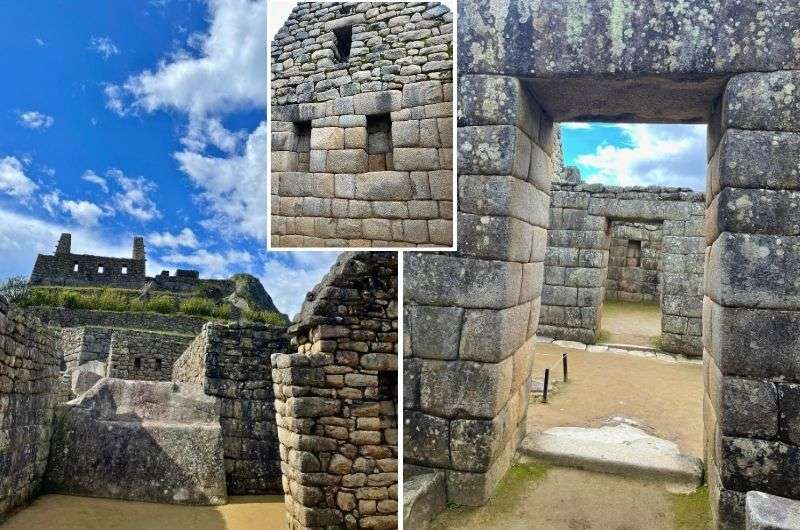
Details of the Inca City in Machu Picchu
2. Pisac (Sacred Valley, closest city: Cusco)
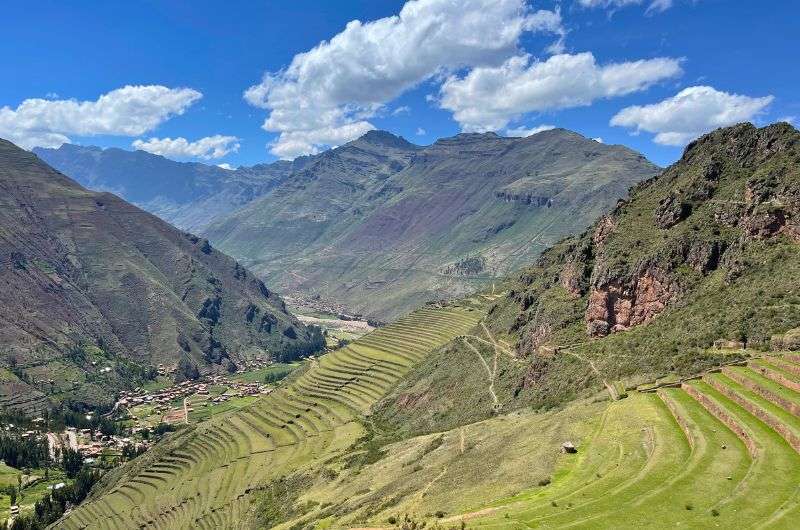
Pisac has ruins, but more importantly, it has views!
- Origin: Inca
- What it is: A former Inca military fortification, Pisac features agricultural terraces, religious temples, and residential areas, all strategically positioned to control and defend the Sacred Valley.
- Fun fact: Pisac's terraces were not only used for farming but also for stabilizing the steep mountain slopes and managing erosion. Their precise design is a testament to Inca engineering!
Pisac is a former Inca fortification that sits at about 3,000 m (9,800 ft) above sea level, so it’s like you’re getting views of the views of Sacred Valley, and they’re phenomenal. Honestly it’s the ruins that you’re supposed to come to Pisac for, but it’s the views that you’ll remember even more. They’re second only to Machu Picchu itself.
Pisac probably served as protection for the Sacred Valley from the east, just as Ollantaytambo guarded it from the west. The mountain slopes covered with hundreds of terraces are a phenomenal sight. You can see the valley below you from the windows of the former fortress towers or wander through the rooms of the city buildings.
How to get to Pisac ruins
The ruins are not in Pisac town directly. The Pisac archeological site is about 3.5 km (2.2 miles) north of town, so it’s best to have your own car or at least a driver for the day to take you. Otherwise, you can take the 2-hour trek out of Pisac town on your own two feet.
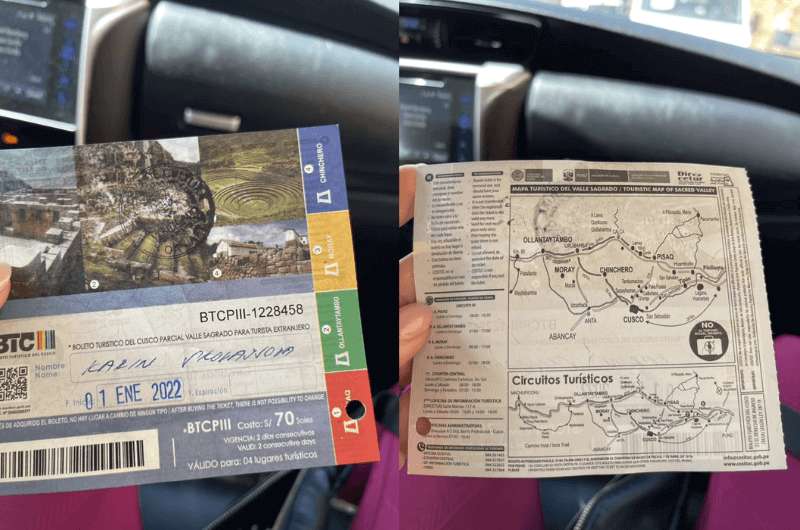
The Cusco Tourist Ticket gives you access to the Pisac ruins
The drive from Cusco to Pisac is about an hour long. Pisac is included in the Cuzco Tourist Ticket in circuits 1 and 4. We explain all the circuits and tell you where to buy your ticket and for how much in our comprehensive Sacred Valley article.
What else is there to see in Pisac?
Besides the Inca ruins, you also have the chance to visit Pisac town itself and get a glimpse at rural life in Peru. Pisac is very popular with tourists, so it’s not like you’ll be getting a candid view, but it’s pleasant nonetheless.
If you want to see the Sunday market, go with adequate expectations—it has become very much geared towards tourists, with many stalls selling souvenirs. For a more traditional market experience, stop by Chinchero instead.
You’ll need 2 hours at the ruins in Pisac. Add on time for the town if you want to have a little extra wander.

3. Moray (Sacred Valley, closest city: Cusco)
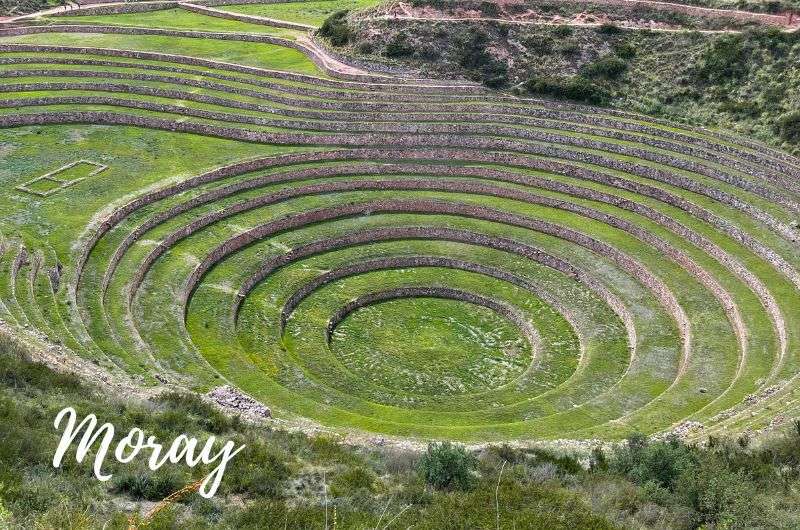
Moray experimental agricultural laboratory
- Origin: Inca
- What it is: An advanced Inca agricultural laboratory consisting of circular terraces arranged in concentric rings, used to experiment with crops at different altitudes and microclimates.
- Fun fact: The temperature difference between the top and bottom terraces of Moray can be as much as 5°C (9°F), allowing the Incas to simulate different growing environments for their crops!
Another fascinating Inca site, Moray is a giant experimental agricultural laboratory. The Incas created round, terraced depressions where they would, through trial and error, grow different crops.
The terraces were constructed with the direction of the sun and wind taken into account, and the difference in temperature between the top and bottom levels was 5°C (9°F), making each level its own little microclimate. Soil from various parts of Peru was brought in to mimic different conditions on the individual levels, too.
Of course, there was an irrigation system that fed the terraces with water from the surrounding mountains. The Incas loved their irrigation!
There are 3 different circular sunken terraces at Moray. You can walk around all of them and try to understand the ingenuity behind the Inca’s thinking. You’ll need 30 minutes to see all there is to see. The scenery at the site is, no surprise, stunning.

4. Chan Chan (La Libertad region, closest city: Trujillo)
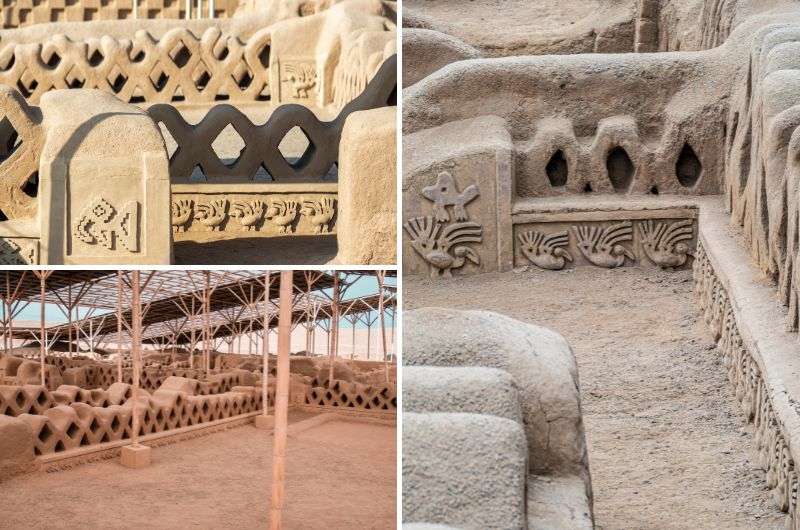
Chan Chan
- Origin: Built around 850 AD by the Chimú civilization, predating the Inca.
- What it is: The largest pre-Columbian city in the Americas, constructed entirely from adobe, and served as the capital of the Chimú empire before its conquest by the Incas.
- Fun fact: Chan Chan covers 20 square kilometers and was once home to an estimated 60,000 people, making it the largest adobe city in the world!
The first non-Inca ruin in Peru worth a mention is Chan Chan, the capital of the Chimú Empire roughly from 900–1470. In its time, it was the largest city in the Americas. The Chimú then fell under Inca rule, apparently believing that the Incas were invincible. The Incas barely had to lift a finger to persuade the Chimú to submit to them—they cleverly cut off the city's water supply, forcing the Chimú to surrender.
UNESCO listed Chan Chan on its Heritage List in 1986. It covers an area of 20 km², making it the largest adobe city in the Americas and second in the world.
Chan Chan literally means Sun Sun, so I’m going to take a wild guess and say the place was sunny, hot, and dry when they built the city. These arid conditions were the reason why the adobe structures of the Chimú were preserved so well over time. Unfortunately, since it’s made of dirt, it’s very vulnerable to extreme weather events, and erosion has affected Chan Chan. Extensive restoration efforts have been, and still are, working to get Chan Chan back in shape.
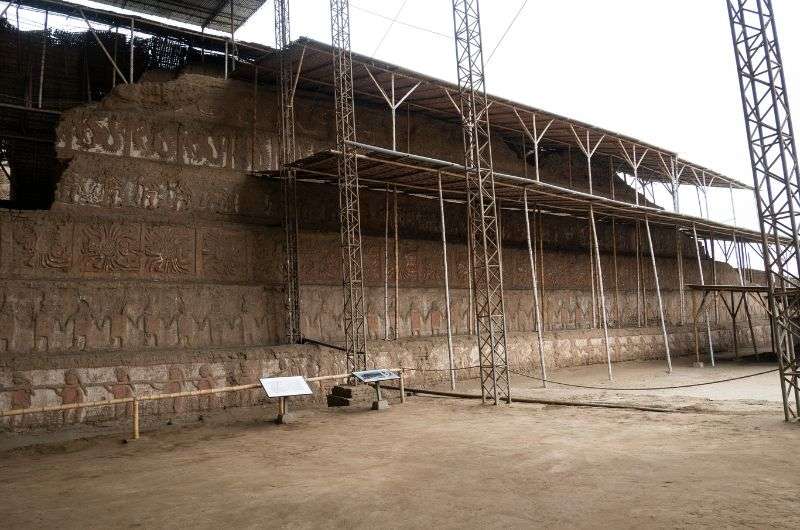
Chan Chan ruins being repaired after erosion
What to expect at Chan Chan
At its peak, Chan Chan was home to 10,000 structures. The central city of Chan Chan was split into ten walled palaces, each containing temples, residences, ceremonial halls, and many alleyways and streets. You can still see the intricate reliefs and carved decorations on the walls, especially in the royal areas. A roof has even been erected over part of the site to protect this historical treasure from rain.
The central area is where the highest class lived, and it’s also the most interesting. Poor people had other things to worry about than carving fish and bird pictures into the walls of their houses. Their flimsy walls didn’t withstand the test of time, so most of what you can see at Chan Chan today is the leftovers of the rich class.
The Incas learned irrigation from the Chimu!
While the city was fabulously wealthy, it always lacked one vital resource: water. To solve this problem, the Chimú engineered an extensive network of irrigation canals to bring water from rivers located in the Andes, approximately 75 km (47 mi) away.
The Incas were believed to have adopted and refined irrigation techniques from the Chimú after they conquered their empire. They integrated Chimú expertise into their own agricultural and hydraulic engineering practices. The Incas were already skilled in water management, but the Chimú’s sophisticated irrigation systems likely influenced the way the Incas expanded and improved their own techniques, allowing them to farm in difficult terrain, such as high-altitude valleys and deserts.
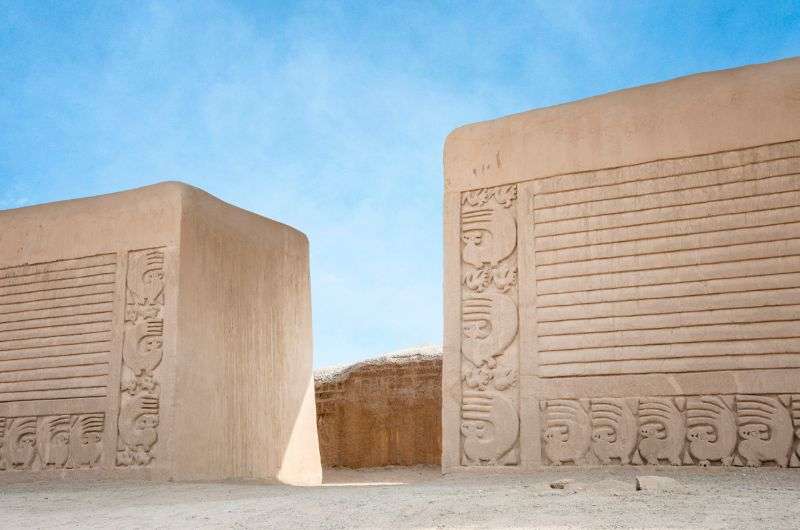
The Chan Chan architecture really is one of its kind!
Making the most of your Chan Chan visit
Before you get to the archeological site of Chan Chan there is a museum where you can learn a bit about the ancient city of Chan Chan and the Chimus’ history, buy your tickets for PEN 10 (USD 2.60) and get a guide (if you choose to). You don’t need a guide but know that there is zero signage at the site, so you’ll be just looking at the ruins with no info. Get a guide. They cost PEN 50 (USD 13).
Chan Chan is a vast site that will take a couple hours of exploring for you to get through. It is really interesting, especially when most of the ruins you will be seeing in Peru are Inca archaeological sites. You’ll appreciate how different Chan Chan is after all those Inca terraces!
Getting to Chan Chan
Chan Chan is located a few kilometers west of Trujillo city on the coast of Peru 480 km (300 miles) north of Lima. You can drive to Chan Chan from Lima, but that means 8 hours in the car and even more if you take the bus (yuck).
There is also an airport in Trujillo that has direct flights from Lima.
5. Pachacamac (Lima region, closest city: Lima)
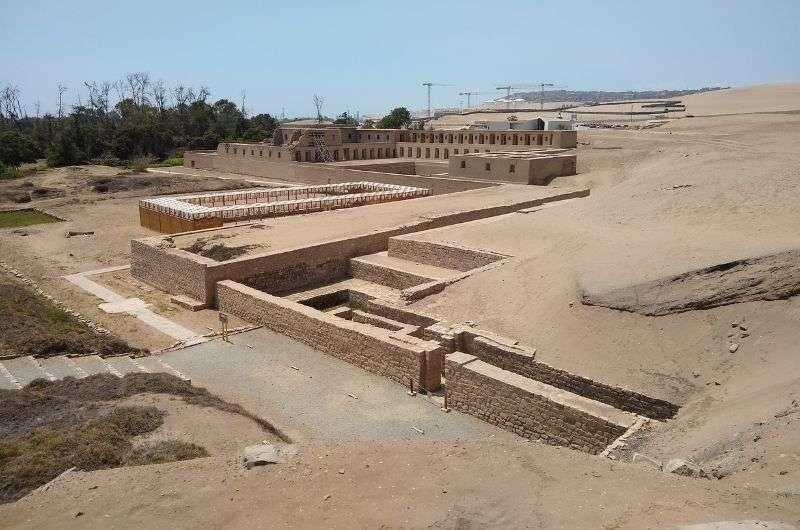
The Mecca of Peru: Pachacamac
- Origin: Originally built by the Lima ancient culture around 200 AD, later expanded by the Wari and finally the Incas in the 15th century.
- What it is: A large religious complex and pilgrimage site on the Peruvian coast near Lima, featuring pyramids, old temples, and plazas dedicated to the god Pachacamac, believed to be the creator of the world and bringer of earthquakes.
- Fun fact: Pachacamac was so revered that the Incas incorporated it into their own religious system after they conquered the site, rather than destroy it, even though it was non-Inca in origin.
Pachacamac is a sprawling archaeological site and pre-Inca and Inca religious complex near Lima, one of the most significant archaeological sites in South America, originally built by the Lima culture and later expanded by the Wari and Incas. It continues to attract visitors as a major pilgrimage site and home to the oracle of the god Pacha Kamaq, the god of creation and earthquakes (literally “Earth Maker”).
Pachacamac has been called the Mecca of Peru, and I’m surprised it doesn’t get more tourists. It was extremely significant back in the day. The Incas even thought he was so cool that they accepted him into their beliefs as the son of the sun god Inti.
Tip: Before heading out to the ruins, which are vast but honestly not the most spectacular, visit the fantastic museum. There are awesome artifacts in there, and you’ll learn about how life was in this part of history. Trust me, it helps to picture everything in your head while you’re outside walking around.
What to expect at Pachacamac ruins
The archaeological site is huge. There are bikes for rent if you don’t want to walk the 5-km (3-mile) dirt path. Or, save yourself the energy and just drive to the different parts of Pachacamac. Not all areas are accessible—you’ll see some sections from behind ropes—but it’s still fascinating. Much of the place is in ruins, so you’ll need to use your imagination (and your guide’s storytelling) to really bring Pachacamac back to life. Look out for the restored Inca road—that’s pretty awesome. Again, imagination!
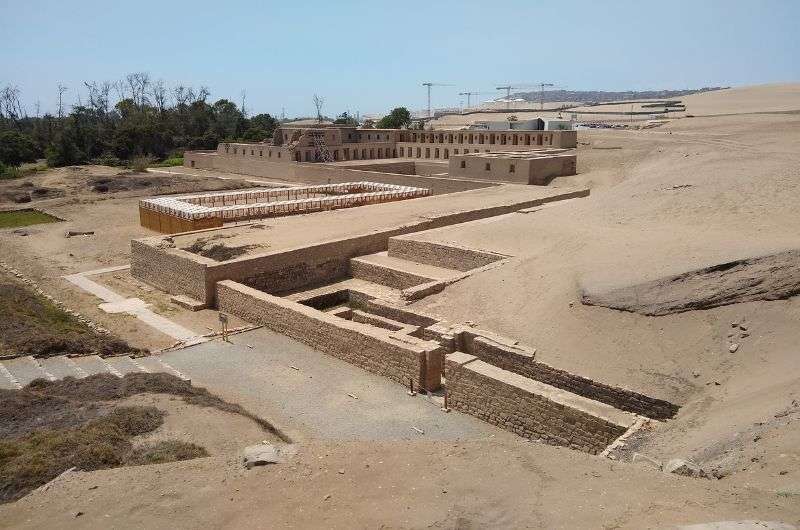
The Pachacamac ruins complex is so huge that the best way to get around is by bike, which are available for rent
A sacred pilgrimage site
Pachacamac wasn’t known for palaces or elite living quarters—it was a sacred site primarily focused on religion and pilgrimage. Pachacamac was one of the most important religious centers for several ancient cultures, long before the Incas came along. Originally built by the Lima culture around 200 AD, it was later expanded by the Wari Empire and finally taken over by the Incas in the 15th century.
Pilgrims came from all over to consult the oracle of Pachacamac, who was believed to communicate the will of Pacha Kamaq, the god of earthquakes and creator of the world. The Incas were so respectful of Pachacamac's spiritual significance that they incorporated it into their own religion rather than destroy it, which they usually did with other conquered sites.
The Temple of the Sun
The Temple of the Sun is ginormous—30,000 m² (323,000 square ft)—and was dedicated to Pacha Kamaq himself. Pilgrims from all over ancient Peru would come to seek blessings, consult the oracle, and make offerings, hoping for protection and prosperity. There’s even a theory that it was once entirely covered in gold.
You can climb to the top for panoramic views of the Pachacamac site, and as a bonus, you'll also get a nice view of the ocean.
Pachacamac tickets and tours
Pachacamac is located right on the coast about half an hour south of the Peruvian capital of Lima, so it is an easy drive.

Tickets can be bought at the museum for PEN 15 (USD 4). A guide costs an extra PEN 25 (6.70), and the tour takes about 1.5 hours. Definitely worth it for the extra insights and explanations for the parts of the ancient ruins that have deteriorated significantly!
The Peruvian hairless dog that wanders Pachacamac
And finally, don’t forget to say hi to the Peruvian Hairless Dog—or Inca Orchid—if you spot one wandering around. This proud, glamorous little guy is Peru’s national dog, and yes, he thinks he runs the place!
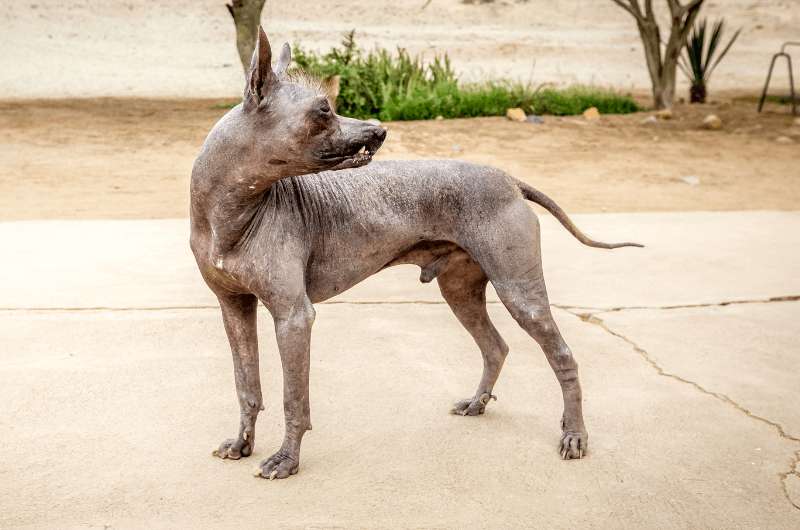
Naked dog. Obviously called the Inca Orchid... isn’t he beautiful?
6. Ollantaytambo (Sacred Valley, closest city: Cusco)
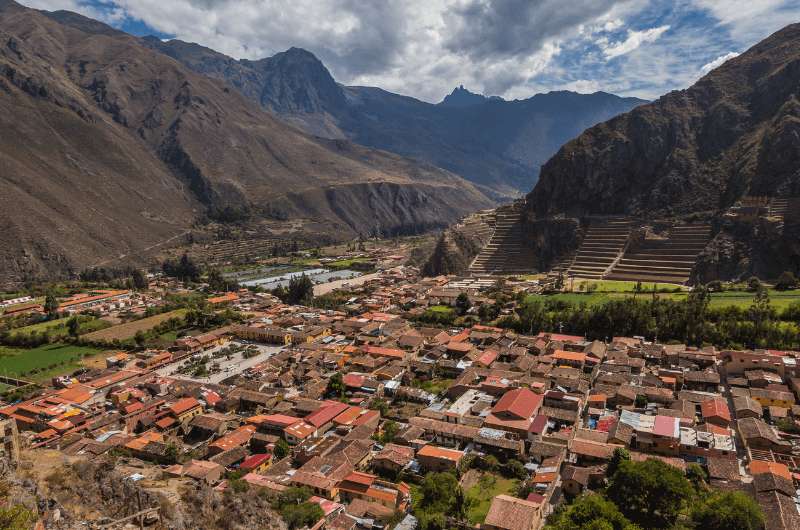
View of Ollantaytambo
- Origin: Inca
- What it is: A massive Inca archaeological site with military, agricultural, and religious significance, featuring impressive terraces, a fortress, and ceremonial areas.
- Fun fact: Ollantaytambo is one of the few places where the Incas managed to defeat the Spanish in battle, using the site's strategic location and terraces to their advantage!
Ollanntaytambo is mainly known as the place where you get on the train to go to Machu Picchu, but there’s more to it than that!
The Inca ruins at Ollantaytambo are some of the best preserved in all of Peru. They’re huge; probably more expansive than the ones at Machu Picchu. The ruins at Ollantaytambo copy the mountain terrain, so you’ll be doing quite a bit of climbing up and down. But you know what climbing up gets you? Views!
What to expect at Ollantaytambo ruins
Just like the terraces at Moray, the sunken terraces at Ollantaytambo were used for growing crops that would’ve otherwise not grown at this altitude.
Originally conquered by Inca Emperor Pachacuti, it became his royal estate where Inca nobility resided, complete with jaw-dropping stone structures like the Sun Temple. But the real action started when the Spanish arrived, and Manco Inca, the hero of Inca resistance, used Ollantaytambo as a fortress against the Spanish conquerors. He even sent Hernando Pizarro packing after a fierce battle—though the Spanish eventually got the upper hand. Today, this UNESCO site still echoes with tales of resilience and glory!
Since Ollantaytambo was a full-on Inca city, you can also find storehouses, quarries and defense walls, letting you wonder how the Incas worked with such huge slabs of stone.
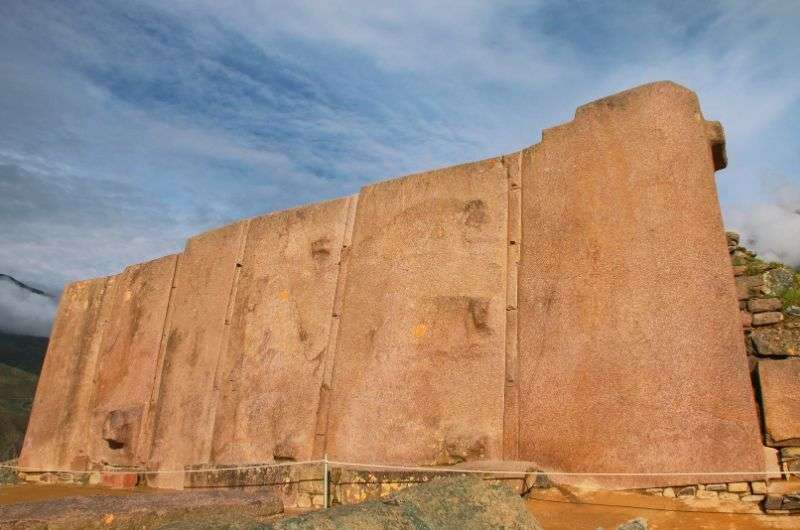
Wall of the Six Monoliths
You start by climbing the 17 terraces that dominate the site, taking in the stunning views of town of Ollantaytambo and Sacred Valley as you go. Highlights include the Sun Temple, with its colossal pink granite stones, the Wall of 10 Niches, and the Pre-Inca Sector.
Take your time walking the terraces and stop to admire the intricate Inca stonework; keep an eye out for significant Inca symbols, including the Andean cross (Chakana). Don't forget to explore the Water Temple and ceremonial fountains near the exit!
Fun fact: The stones for the Wall of the Six Monoliths had to be moved 6 km (3.7 miles) from a quarry on a mountain on the opposite side of the river. They didn’t use the wheel, so how did they do it?!
How to visit Ollantaytambo: Location and tickets
The Ollantaytambo ruins are about 1 hour and 20 minutes away from Cusco by car (to the west).
You can get a guide or just wander around Ollantaytambo ruins on your own. I needed 2 hours to get a good look at it all, though it’s only about 2 km (1.2 miles) to walk between the main highlights.

7. Chinchero (Sacred Valley, closest city: Cusco)
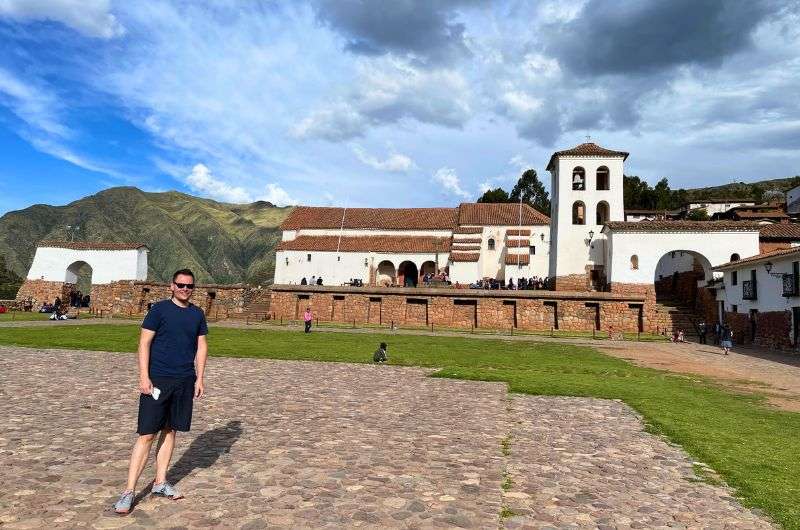
Chinchero is the birthplace of rainbow!
- Origin: Inca
- What it is: A small Inca town known for its agricultural terraces, colonial church, and vibrant traditional markets, sitting on top of Inca ruins.
- Fun fact: Chinchero is believed to be the birthplace of the rainbow according to Inca mythology, and it was a favorite resting place for Inca royalty!
Have you ever wondered where rainbows start from? Well you’re in luck! Chinchero is the birthplace of the rainbow. No idea why. It’s not why you visit Chinchero anyway, so who cares.
Chinchero is a picturesque town at a respectable altitude of 3,765 m (12,352 ft), about 30 km (18 mi) from Cusco in the Sacred Valley. People here still wear traditional dress as they go about their business. Visit on a Sunday and experience the vibrant Sunday market. The Quechuas are known for their weaving techniques, so go ahead and buy some souvenirs! You can even take weaving classes. Chinchero also features a colonial church, built in the 17th century atop Inca foundations, merging both Inca and Spanish architectural styles.
The archeological site is one of the main attractions of Chinchero, though excavations are still underway. It’s only a few years ago that more terraces were uncovered, and it is estimated that part of Chinchero town stands on more Inca ruins.
A palace built for Túpac Yupanqui, son of the first Inca Emperor, stands, or rather lies, in the center of the Chinchero Inca site. The Spaniards and some fires turned the palace into just a base and a few corner niches.
The terraced Inca ruins at Chinchero feel almost abandoned compared to other Inca ruins you’ll be visiting in Peru. They’re located on the north side of the town.
8. Sacsayhuaman (Cusco region, closest city: Cusco)
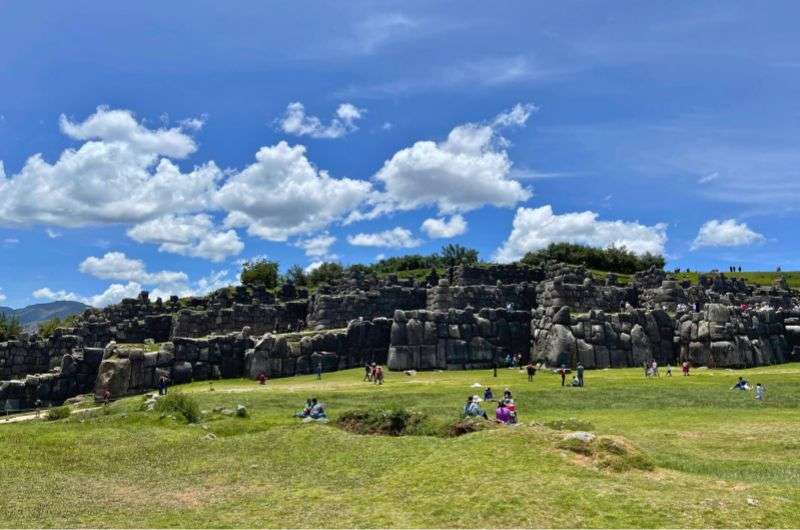
Inca complex Sacsayhuaman
- Origin: Inca
- What it is: A massive Inca fortress located on a hill overlooking Cusco, known for its impressive stone walls, some of which are made of stones weighing over 100 tons.
- Fun fact: The precise construction of Sacsayhuamán’s walls, with stones so tightly fitted that even a blade of grass can’t fit between them, remains a mystery and is considered one of the greatest examples of Inca engineering.
Sacsayhuamán is a large, fortified Inca complex located on the north side of Cusco. It sits on the top of a steep hill over the city. Can you say views?! This strategic location not only gave it a commanding view of Cusco but also made it a key defensive structure to protect the city from invaders.
The most fabulous part of the Sacsayhuaman ruins is the central plaza, which is where ceremonies and large gatherings were likely held. It could fit thousands of people at once, making it the perfect setting for festivals and rituals honoring the gods or celebrating victories. The massive stones used in the walls surrounding the plaza are some of the largest ever used at any site in the Americas. One of the stones weighs over 100 tons and stands nearly 5 m (16 ft) tall.
The Incas were known for their precise cutting and shaping of the individual stones that interlocked so perfectly that no mortar was ever used, but still their buildings would withstand any earthquake. The craftsmanship of these zigzagging walls remains a mystery, as they were built to withstand the region's seismic activity, something the Incas mastered with unparalleled skill.
Another amazing part of this feature is that thousands of men had to gather the stones from a quarry located about 20 km (12 mi) away and somehow transport them to the hill above Cusco to Sacsayhuaman.
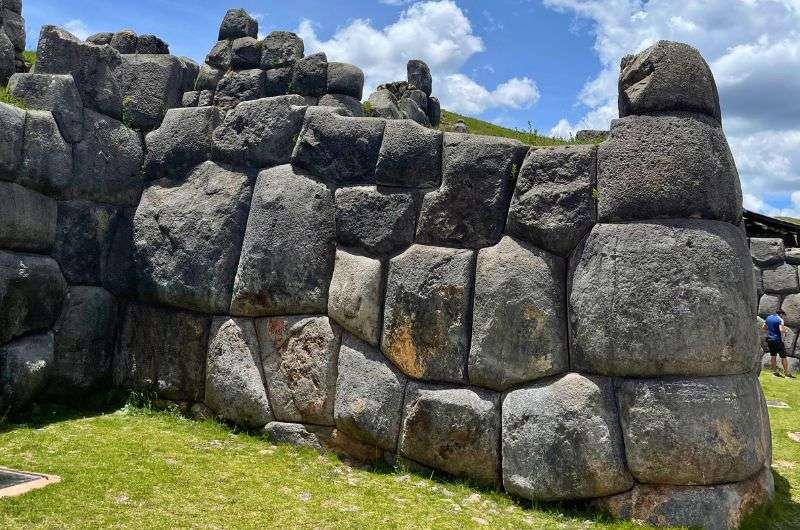
How the hell did they manage to transport all these giant stones along the 20 km way???
Just HOW?! It remains one of the greatest unanswered questions of Inca engineering. Some of the stones measure 5 x 2.5 m (16 x 8 ft) and weigh up to 200 tons. Modern technology still struggles to explain how the Incas moved these enormous blocks and fit them so precisely together.
After the Spaniards seized Cusco, they started taking Sacsayhuamán apart stone by stone. Those stones were used to build new structures in Cusco, like churches and government buildings. Only the largest stones stayed in Sacsayhuamán, since even the Spaniards couldn’t move them. So again, how in the world did the Incas do it?!
Besides the incredible Inca ruins, you can also catch amazing views of Cusco from Sacsayhuamán, with the city spread out below and the sacred mountain Ausangate visible in the distance. On a clear day, the views are absolutely breathtaking.
9. Vilcabamba (Cusco region, closest city: Cusco)
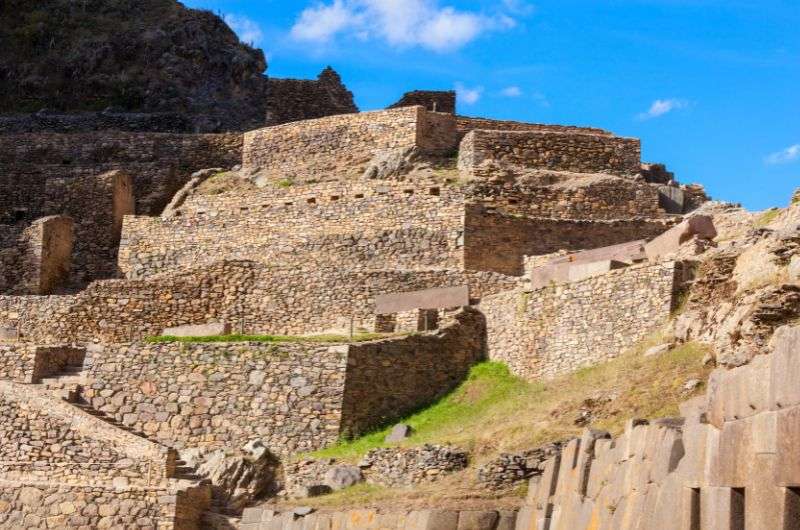
Vilcabamba ruins
- Origin: Inca
- What it is: The last refuge of the Inca Empire, hidden deep in the jungle, where the Incas resisted Spanish rule for nearly 40 years before its fall in 1572.
- Fun fact: Vilcabamba is the real “Lost City of the Incas”, hidden deep in the jungle. While Machu Picchu often gets this nickname, it was actually Vilcabamba that served as the final Inca stronghold after the Spanish conquest. Machu Picchu remained largely unknown until its rediscovery in 1911, leading to its “Lost City” reputation, but Vilcabamba, as the true last refuge of the Incas.
The true Lost City of the Incas, Vilcabamba (also known as Espiritu Pampa), is where the Incas tried to hide from the Spaniards deep in the jungle. For almost 40 years, that plan worked. And then, in 1572, the Spaniards got them. The jungle swallowed up the city and was searched for numerous times over the centuries, but remained a mystery. Today, it is one of the lesser known ruins in Peru, because it is still very hard to get to.
How to visit Vilcabamba: A trek through the jungle
The jungle hasn’t moved, so in order to visit Vilcabamba, you have to go on an expedition of your own. Since you’ll be finding a lost city, it’s recommended to take a tour or guide. You aren’t Indiana Jones.
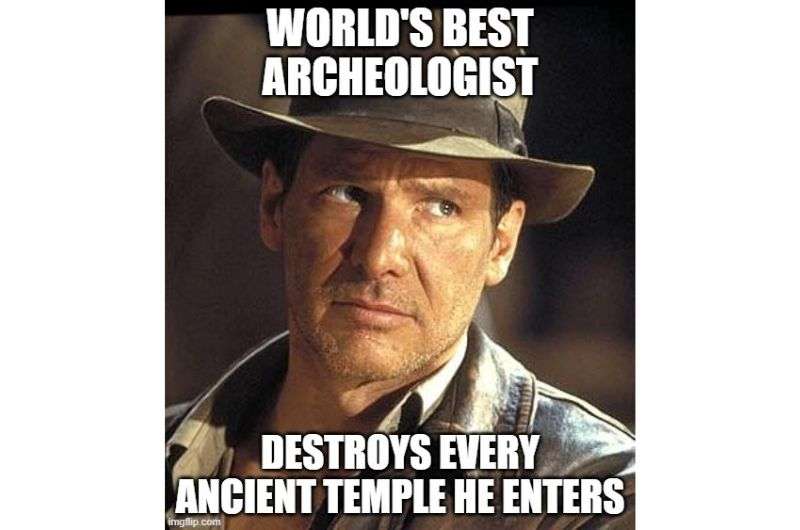
This one probably wouldn’t be the best guide
Most tours on offer start in Cusco and are 7 or 8 nights with camping along the way. The trail starts in Huancacalle, but just driving to the village takes 6 hours from Cusco. You’ll descend into the jungle, following the trail that the fleeing Incas probably took when searching for a hiding spot. You’ll only reach Vilcabamba on the second to last day. The hiking on these longer trips is mostly downhill, but it isn’t a walk in the park. Prices are around USD 1,200.
The highest point in the trek is at an altitude of 3,900 m (12,800 ft), so you could get a little light-headed. Read up on altitude sickness before you go, just to be on the safe side.
Sometimes, all you need to do is take the first step... I've filtered out the best hotels in Peru for you
Save it for yourself to come back to later, or share with your friends on social media!
I've already planned your ititnerary for the trip, complete with my travel tips.
A more adventurous option
If you are feeling a little more adventurous, you can make your own way to Huancacalle and ask around for a guide and mule. You won’t have trouble finding someone to take you, plus you’ll get the added excitement of sleeping in villagers’ houses, meeting locals and having Espiritu Pampa almost all to yourself. By one traveler’s account, he paid only about USD 100 for the whole trip.
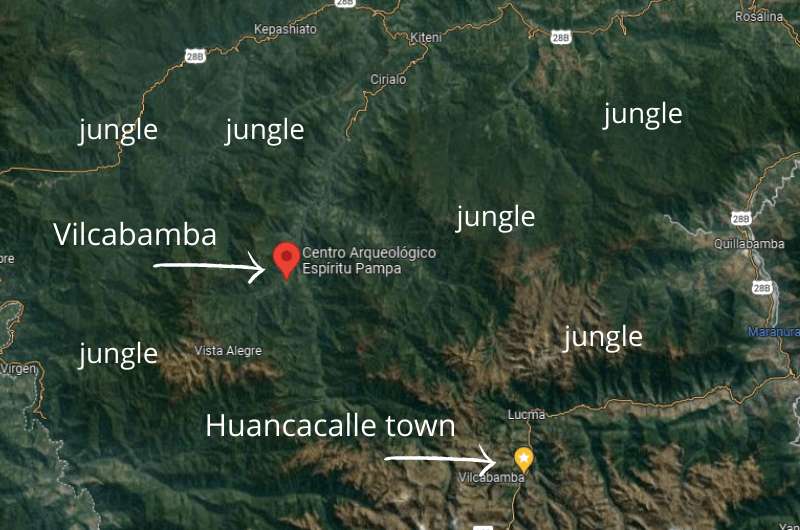
You’ll be walking through lots of jungle. Adventure!
Hiram Bingham’s mistake and the real discovery of “the Lost City”
Hiram Bingham, who “discovered” Machu Picchu in 1911, likely also came across Vilcabamba on his adventurous and sometimes dangerous expeditions, but somehow Machu Picchu ended up being the Lost City in his mind. Apparently Bingham twisted the facts just a little bit to make Machu Picchu out to be The One. He certainly didn’t think that Vilcabamba was Vilcabamba, which is why he didn’t spend any more time there. Oops.
It wasn’t until archaeologist Gene Savoy started thorough excavations of Vilcabamba in 1964 that it was finally concluded that this site was actually the Lost City.
Since Vilcabamba is a fairly recent discovery, there are still many questions left to answer about it. For example, it appears that the Incas didn’t actually build Vilcabamba, rather adapting and modifying an already existing city that was left by the Wari culture. Perhaps that’s why the structures aren’t of the same quality that we’re used to seeing from the Incas? Or maybe that had something to do with the circumstances that surrounded the Incas moving here in the first place? How well would you construct a house in the middle of the jungle with a bunch of Spaniards breathing down your neck?

10. Qorikancha (in Cusco city)
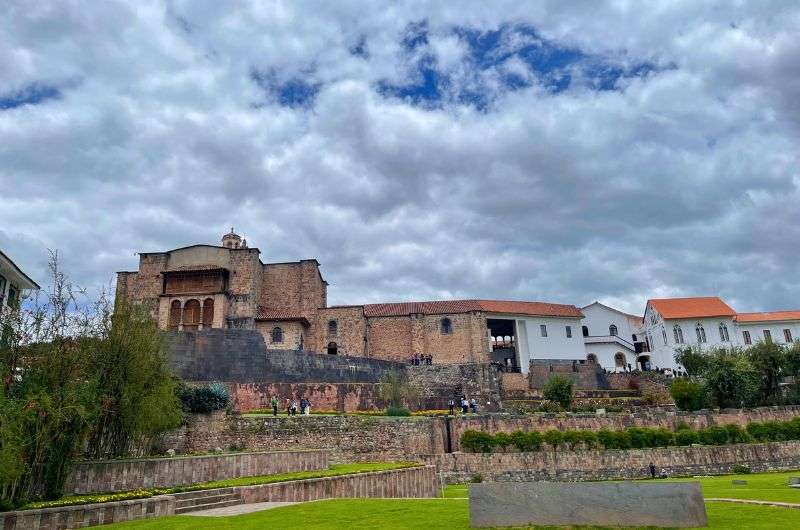
Qorikancha ruin
- Origin: Inca
- What it is: Once the most important temple in the Inca Empire, dedicated to the Sun God Inti, its walls were covered in gold, and it served as the empire’s main religious center.
- Fun fact: After the Spanish conquest, the Santo Domingo Convent was built on top of Qorikancha’s foundations, but you can still see parts of the original Inca stonework beneath the colonial architecture.
Cusco was the capital of the Inca Empire, and Qorikancha (Coricancha) was the most important temple in Cusco, making it the most important temple in the Inca Empire.
The Spanish takeover and construction of Santo Domingo
When the Spaniards took over, they took Qorikancha’s Temple of the Sun apart and used the stones for their own little building projects. Most of the stones were used to build the Convent of Santo Domingo, which is the church that sits right on top of Qorikancha’s base. So, when you get to Qorikancha, the church is the new building and the stone walls on the bottom are the Inca leftovers.
The walls of Qorikancha were once covered in gold, with golden statues all around. The Spanish were fascinated by all the bling, and when they captured the last Inca leader, Atahualpa, in 1533, the Incas paid the ransom for him in gold from Qorikancha.
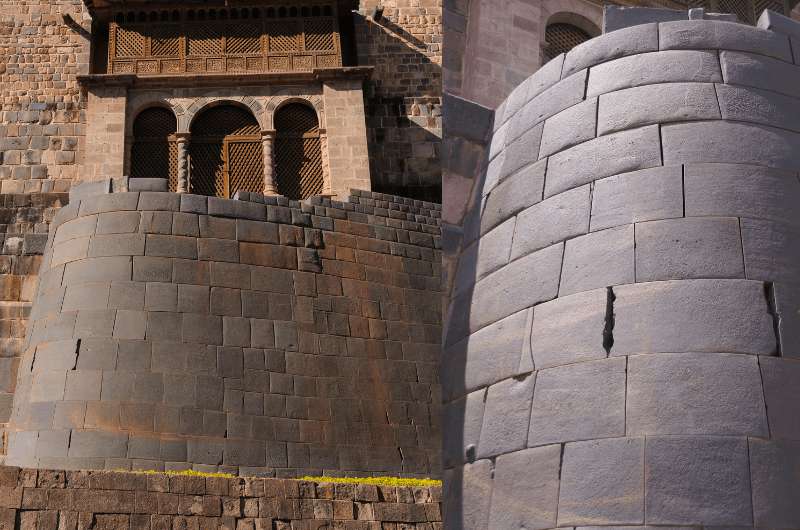
Only the bottom are the Inca leftovers (still standing strong!)
Inca construction vs Spanish construction
You might’ve read about how amazingly well-built Inca structures are, with massive stones sticking tight like they were glued together, but in fact it was just the precise cutting and fitting that allowed them to withstand time and natural events.
The Spaniard took a century to build their cathedral on top of the Inca temple’s base. A few earthquakes later, the church was severely damaged while the Inca base was just sitting there, as perfect as ever, smirking condescendingly at the poor work of the Spaniards.
What remains of Qorikancha today
The Temple of the Sun is only one of many temples that used to stand in the Qorikancha site, but they are all in ruins now. There is a museum attached to the Temple of the Sun with artifacts from Inca history, like textiles, ceramics, paintings and musical instruments.
You’ll need a maximum of 1 hour at Qorikancha.
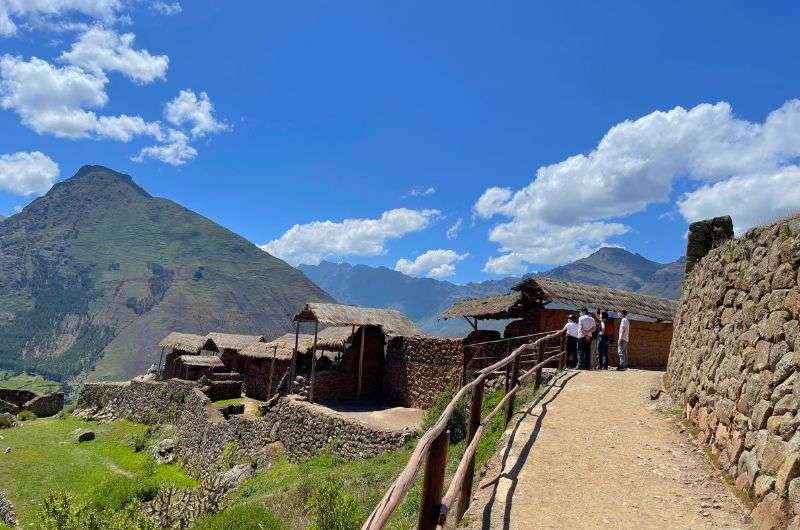
Those were the 10 best ruins in Peru I’ve visited. See you next time!
You might also be interested in reading:
- A 3-Day Cusco Itinerary
- A 2-Week Peru Itinerary: A Day-By-Day Trip Plan
- Top 9 Places to See in Sacred Valley
- A Complete Guide to Visiting the Inca Sites of Moray and Maras
This post contains affiliate links. I earn a small commission if you make bookings through my links, at no additional cost to you. Thank you for your support!








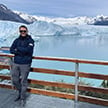

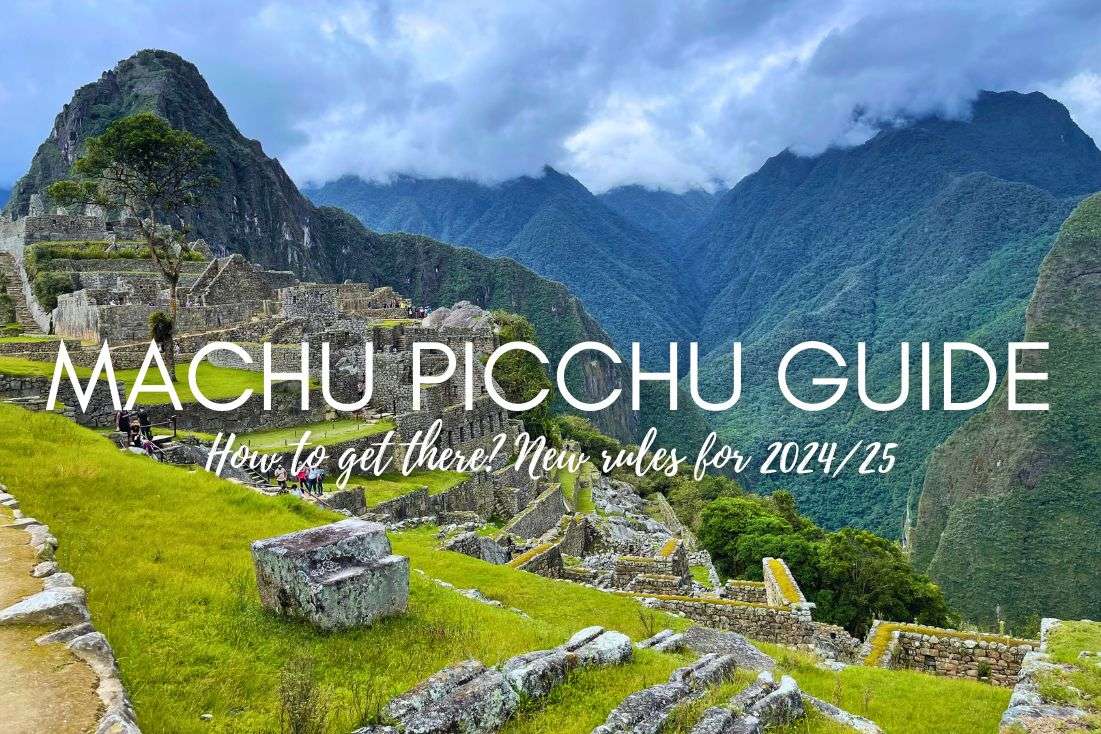
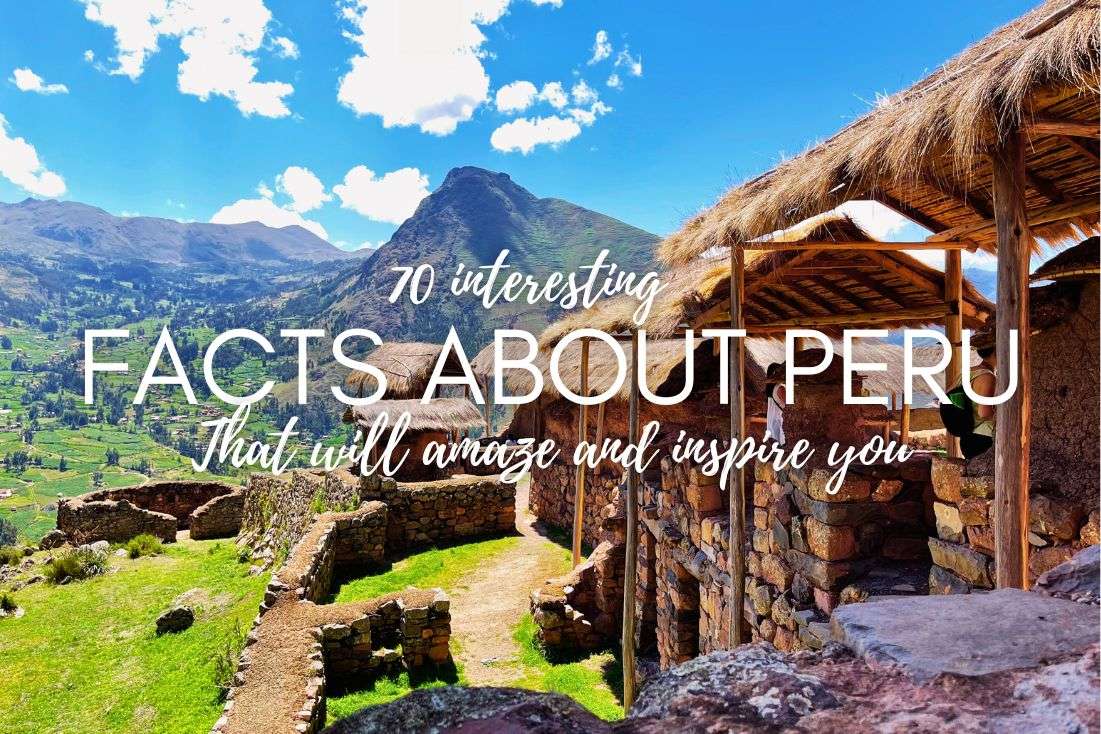
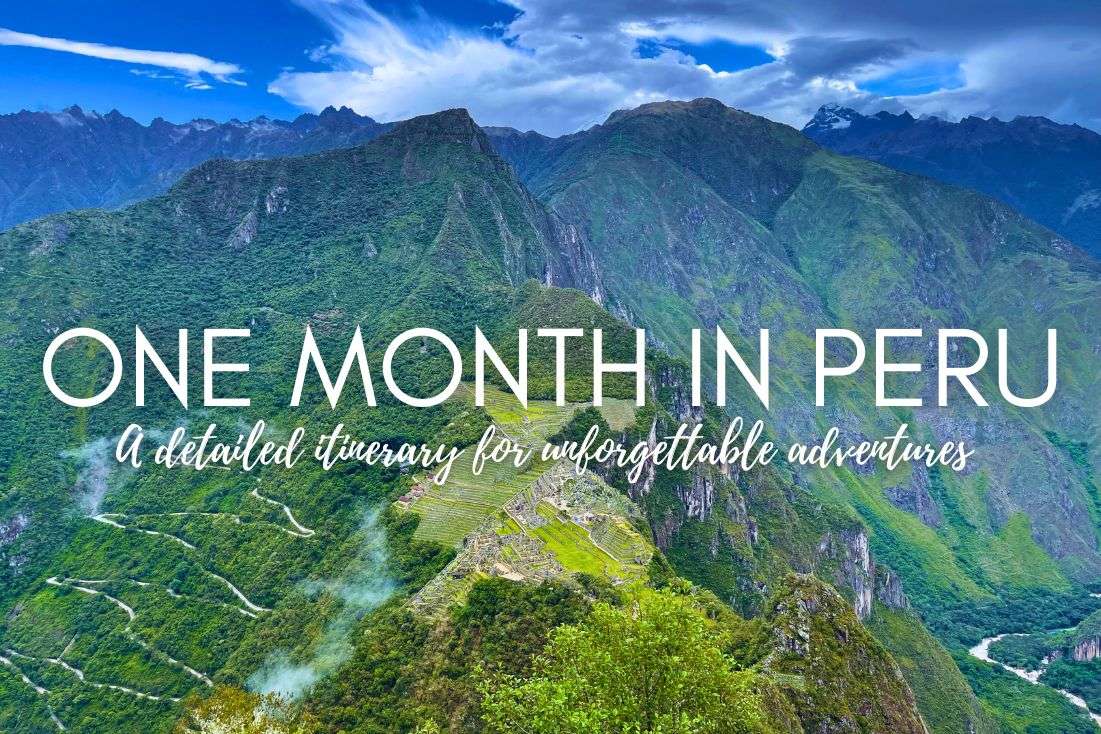



Comments | Thoughts? Give us a shout!